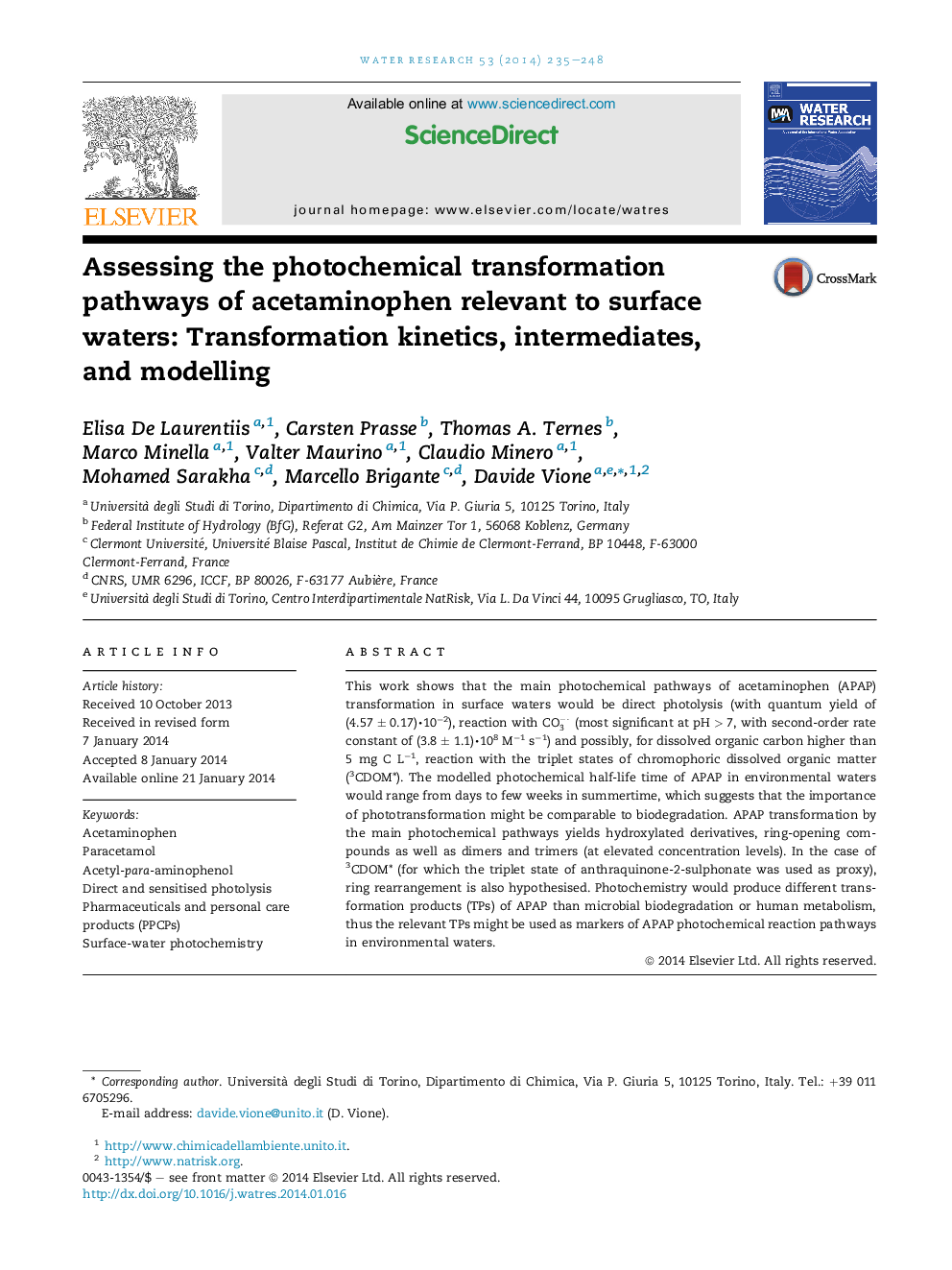| کد مقاله | کد نشریه | سال انتشار | مقاله انگلیسی | نسخه تمام متن |
|---|---|---|---|---|
| 4481605 | 1623115 | 2014 | 14 صفحه PDF | دانلود رایگان |
• APAP would undergo phototransformation in addition to biotransformation.
• The photochemical lifetime of APAP in surface waters would be of days to weeks.
• Photodegradation is due to direct and triplet-sensitised photolysis and to CO3−·.
• Reaction with CO3−· would prevail at low DOC and under basic conditions.
• Photochemistry, human metabolism and biodegradation form different intermediates.
This work shows that the main photochemical pathways of acetaminophen (APAP) transformation in surface waters would be direct photolysis (with quantum yield of (4.57 ± 0.17)⋅10−2), reaction with CO3−· (most significant at pH > 7, with second-order rate constant of (3.8 ± 1.1)⋅108 M−1 s−1) and possibly, for dissolved organic carbon higher than 5 mg C L−1, reaction with the triplet states of chromophoric dissolved organic matter (3CDOM*). The modelled photochemical half-life time of APAP in environmental waters would range from days to few weeks in summertime, which suggests that the importance of phototransformation might be comparable to biodegradation. APAP transformation by the main photochemical pathways yields hydroxylated derivatives, ring-opening compounds as well as dimers and trimers (at elevated concentration levels). In the case of 3CDOM* (for which the triplet state of anthraquinone-2-sulphonate was used as proxy), ring rearrangement is also hypothesised. Photochemistry would produce different transformation products (TPs) of APAP than microbial biodegradation or human metabolism, thus the relevant TPs might be used as markers of APAP photochemical reaction pathways in environmental waters.
Figure optionsDownload high-quality image (269 K)Download as PowerPoint slide
Journal: Water Research - Volume 53, 15 April 2014, Pages 235–248
